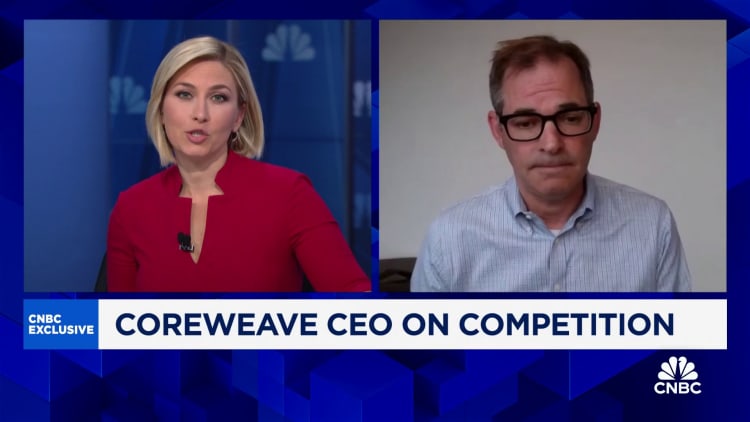AI startup CoreWeave raises $7.5 billion in debt, Blackstone leads

Michael Intrator, CEO of CoreWeave, participates in a CNBC interview on May 9, 2024.
CNBC
Fresh off a $1.1 billion equity funding round, artificial intelligence infrastructure startup CoreWeave has raised $7.5 billion in debt to more heavily invest in its cloud data centers.
Blackstone’s funds led the lending round, with participation from Coatue, Carlyle, BlackRock, Magnetar and others. In its equity financing two weeks ago, CoreWeave was valued at $19 billion.
Investors are flocking to CoreWeave because the 550-person company is one of the main providers of Nvidia’s chips for running AI models. Demand for the technology is soaring as businesses across virtually all sectors are racing to integrate AI chatbots into their products following the launch of OpenAI’s ChatGPT in late 2022.
With Nvidia’s AI-focused graphics processing units in limited supply, CoreWeave’s access to the processors has made it a hot commodity. That means CoreWeave, backed by Nvidia, is going up against the world’s top cloud infrastructure operators, including Amazon and Google.
On its website, CoreWeave claims to have lower on-demand prices than any major cloud company. Even Microsoft, the world’s second-largest provider of cloud infrastructure, has started relying on CoreWeave to help supply OpenAI with the computing power it needs.
Colette Kress, Nvidia’s finance chief, said at a Citigroup event in September that CoreWeave has “quite some skills in terms of just their speed of adoption, their speed in terms of setting things up.”
A CoreWeave spokesperson declined to comment on whether the company is using Nvidia GPUs as collateral for the fresh debt financing. Such GPUs were used as collateral in a $2.3 billion debt round last year, Reuters reported.
The new debt will help CoreWeave pay for servers loaded with GPUs, as well as networking equipment and cabinets, the spokesperson said.
Correction: An earlier version of this article misspelled Colette Kress’ name.

Read the original article here






